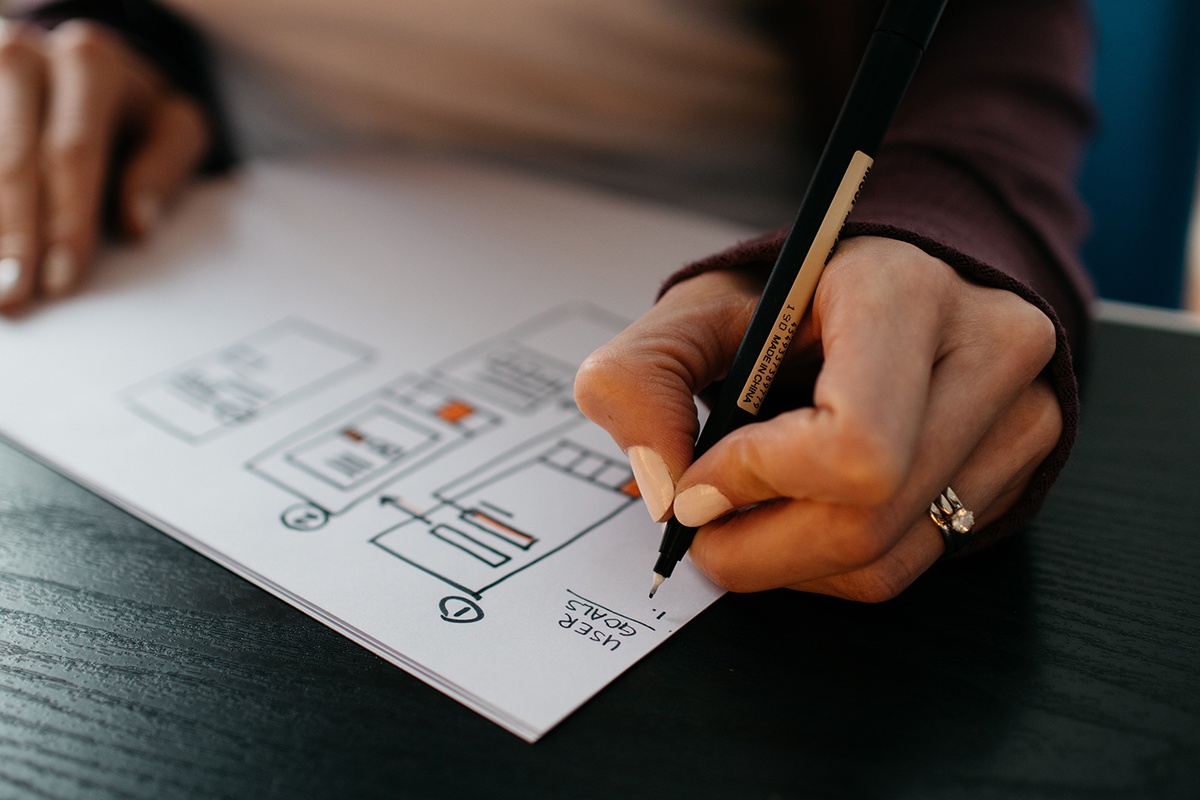Going from app idea to creation shouldn’t be a painful experience. That’s why an app blueprint is essential to any successful startup's app launch.
What is an app blueprint?
Think of an app blueprint like an architect’s guide to building a new structure. Before the construction work can begin, the architect needs to have a complete and detailed layout. The architect needs to think about big picture issues, like safety hazards, and smaller issues, like wallpaper colors. You will also need to think about all of the possible problems that arise when creating an app.
An app blueprint allows you to address big picture issues, like how this app will create value for users, and smaller issues, like what type of login options to offer, before you sink your time and money into costly features that don’t make sense. Like an architect, app designers and developers need a blueprint to help them think through all possible issues moving forward.
Benefits of app blueprinting:
- Articulates the scope of your app idea for your team and future investors
- Bounces proposed solutions off potential users before investing in development
- Saves money by foreseeing problems in design before developing expensive errors
- More accurately estimates costs by thinking through all the details of the app
- Provides quicker solutions for potential issues in design, thereby saving you coding time
The early-stages of startups are crucial points of decision, and app blueprints help you pinpoint and address issues earlier in the process rather than later. Having a clear blueprint can make or break your launch.
What About the Costs of Blueprinting?
Blueprinting can be costly, especially for startups, but you need to remember that the benefits exponentially outweigh the costs. It can be tempting to move directly to coding, thereby avoiding the expenses of blueprinting. The cost of developing an app can vary considerably depending on the project but is at least tens to possibly hundreds of thousands of dollars. Spending $5 to $10K on upfront planning and blueprinting might seem like an extra expense, but it will ensure more expensive mistakes don't pop up down the road when you begin spending the bulk of your budget on development.
It does take time and money to go through a blueprinting process, but it'll save you time and money down the road.
Blueprinting is Essential
Creating a blueprint will allow you to articulate a specific budget and plan. Without this detailed itinerary, you risk overspending and sinking your project before it begins. It can be very tempting to jump in and deal with any problems as they arise. But that would be a huge mistake.
Beginning the development phase without a proper budget in place is a costly — and sometimes fatal — error. You need to blueprint so that you can understand how much time, energy, and finances you should be spending on each specific part of your application. It is a waste to spend thousands on a feature that may be a great idea, but has already been done by your competitor and has already been deemed unlikable by users.
Blueprinting is essential because it allows you to carefully plan each step moving forward. A critical part of any project plan is scheduling. You need to have a clear timeline and budget. A schedule allows you to create a more accurate timeline and budget that you can present to investors. The more accurate your blueprint is, the more accurately you’ll be able to project the schedule.
This process is necessary and the benefits far outweigh any initial costs. Blueprinting allows you to pinpoint possible errors before they happen, before you spend hundreds of hours coding a system that just doesn’t make sense and before you make costly errors due to lack of foreplanning and before the tech world loses another innovative startup.
What does the blueprinting process look like?
First, by just deciding to use an app blueprint, you’ve already completed your first smart decision. The next step is simply creating the blueprint. There are two different strategies to creating a blueprint, and you need to figure out which one works best for you. The following are the two strategies for you to consider:
- Hiring an agency - Agencies offer established teams with extensive experience that can seamlessly walk you through the entire process. Agencies will work with you to turn your vision into a reality.
- Doing it in-house - If someone on your team has a background in UX/UI design or you want to hire someone with this experience, you can go through this process by yourself using tools like Sketch, Invision, Photoshop, etc.
For each of the following steps, you will need to do some significant research. This is another reason why blueprinting is so important in the beginning stages. You should be knowledgeable enough to answer all these key questions before an investor asks you them in a meeting.
- Strategize - In this step, you need to be able to clearly point to a need in the market. How does your idea stand out among other competitors? What need does this fulfill in the current market? Who is your target audience for this app? It is a good idea to list out your competitors, your marketable features, and your audience's needs. In addition, think about what you want from this app. What are your personal and professional goals? What are your team’s goals? How can you ensure that all of those goals are met?
- Competitive Research - Next, you should begin analyzing your competitor, your investors, and your audience. How has your competitor managed to succeed? Which companies are likely to invest in this type of app? How does your audience interact with your competitors apps and how will they interact with your app?
- Budget - You have a solid concept, and you are ready to start investing in yourself. What is your total budget? What is your blueprint budget? Remember to keep in mind that the blueprinting process often pays for itself in terms of making sure you avoid costly missteps. How much of that blueprint budget do you want to spend on design software or hiring an agency? What are the pros and cons to the two main blueprinting strategies? What are your projected costs after blueprinting? Think not just about blueprinting costs, but also about the future expenses incurred from big items, like marketing your app, and from smaller items, like traveling fees to meet possible investors.
- High-level Systems Maps - You are moving forward from the simple brainstorming and researching process now. You should now start blueprinting your design on some type of design software either with or without an agency’s help. You have an idea of what you want the app to look like, but is that idea feasible? Will your ideas match the technology available to you? Will users be receptive to your app? This is the time to think about user experience (UX) and usability and begin customizing your app so that it is marketable in both design and concept.
- Think Future - You have a clear design and you have done all your research. You now need to consider your plan moving forward. What is your timeline for meeting certain goals? For example, do you want to have an investor by the end of the year? What is your desired launch date? When should you begin marketing your app? When do you expect to start prototyping your app?
This process can be long and time consuming, but it’s crucial. It will unite your team because your team now has proper goals to work towards and a deadline to meet those goals. You won’t have to worry about expensive errors because you have a clear plan that accounts for possible mistakes. There is a decreased chance of unexpected costs due to mistakes, but if a mistake does occur, you can consult your budget and readjust it as needed. And, finally, you have a strong foundational framework that you can present to early investors.
Elizabeth G. Hopta
Don’t Just Build an App. Build It Right. Let's start blueprinting your app.


